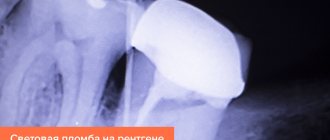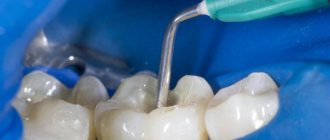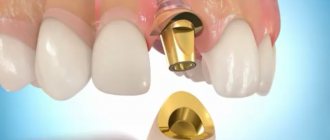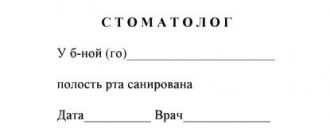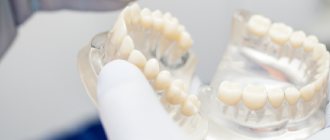A gum graft is a type of dental surgery performed to correct the effects of gum recession. This is a quick and relatively simple operation in which the doctor removes healthy gum tissue from the roof of the mouth and uses it to restore gum where it has receded.
Gum recession occurs when the gum tissue wears away, exposing more of the tooth at the root. This may cause increased sensitivity, especially when eating or drinking hot or cold foods. Because gum recession tends to happen slowly, many people don't realize it's happening to them.
If left untreated, gum recession can eventually lead to tooth loss.
Some people choose to have a gum graft for cosmetic reasons, such as having a better smile; while for others, a gum graft is needed to protect the damaged tooth from damage and repair the damage already done.
Procedure
A dentist discusses gum transplant surgery with a patient.
There are different types of gum grafts available.
There are a variety of gum grafts, and the type of surgery depends on the extent and severity of the damage and the individual's individual needs.
The periodontist will discuss the different types of surgery available with the person to decide which option is most suitable.
Before the gum graft begins, the periodontist will administer a local anesthetic to numb the area so that the procedure is not affected.
They may also remove some of the existing gum to expose the root of the tooth and clean it.
Three different types of gum transplant surgery:
In this procedure, the periodontist:
- removes tissue from the roof of the mouth by making a flap and taking tissue from underneath the top layer
- sews tissue onto existing gum tissue to cover the exposed tooth
- seams flap on the roof of the mouth where they got the fabric from
Free gum vaccinations
This is the preferred method for people with thin gums who require additional tissue to enlarge their gums.
In this procedure, the periodontist:
- removes tissue directly from the top layer of tissue on the roof of the mouth
- stitches this tissue down to the existing gum area
Pedicle (lateral) grafts
This is the preferred method for people who have a lot of gum tissue growing near an exposed tooth.
In this procedure, the periodontist:
- gum graft tissue around or adjacent to the tooth in need of treatment
- only partially cuts off this tissue, supporting one edge
- stretches the tissue over or down to cover the exposed tooth root and hold it in place with stitches
The periodontist can remove tissue from a tissue bank rather than removing rubbery tissue from a person's mouth.
Preparing for gum transplant surgery
Someone must drive the person home after the procedure.
Once you and your dentist have considered all the options and decided on the type of surgery, it is important to ensure that a family member or friend accompanies you.
This is important because pain medications are not safe during gum graft surgery.
People who receive gum vaccinations will be able to return home after the procedure. The doctor will provide all post-operative care instructions to ensure successful healing of the graft.
Recovery
Recovery will help:
- avoid brushing teeth at the treatment site
- use a special mouthwash to reduce plaque buildup
- take antibiotics to reduce the risk of infection
- avoid strenuous exercise
- avoid foods that are difficult to eat
- eating soft, cool foods such as ice cream, pasta, eggs, yogurt, and soft cheese
- avoid smoking
The pain and discomfort a person experiences will vary. For example, if the periodontist uses tissue from a tissue bank, the person will experience minimal pain. If tissue from the roof of the mouth is removed, a person may feel pain for several days.
The healing process is often quick, with 1 to 2 weeks for the mouth to completely heal, but can sometimes take longer. People can take over-the-counter pain relievers or prescription medications to help manage any discomfort.
After the procedure, teeth may become more sensitive than usual, especially to hot and cold foods, and people may benefit from using a desensitizing toothpaste or mouthwash.
Most can return to work the next day.
There will likely be a follow-up appointment with your dentist after surgery to check that the healing process is going well as expected. The dentist may also remove sutures if necessary.
Not only will your gums look different after surgery, but they may become stiffer and harder.
Alternative options
- Cleaning teeth using ultrasound . Tartar is destroyed, the integrity of the unit is preserved.
- Drug treatment using antiseptics. The best option is Chlorhexidine in the form of rinses or compresses.
- A course of antibiotics . Allows you to quickly relieve the inflammatory process and alleviate the human condition.
Conservative treatment is not always effective. If characteristic symptoms reappear or the situation worsens, gingivectomy becomes mandatory.
Are there any complications?
Complications from gum graft surgery are minimal and uncommon.
However, it is possible that people may experience the following:
- bleeding gums
- swollen gums
- the teeth seem to wobble (although this should only be temporary)
- too sensitive teeth
- gaps between teeth
- infection
Sometimes the graft tissue may not attach properly to the graft site. This is very rare, but if it occurs, further surgery may be required.
Some people don't like the way their smile looks after surgery. In these situations, the periodontist can reshape the gums to help change the way they look.
Contraindications
Dissection of soft tissues with further installation of drainage is not possible in all cases. Among the prohibitions to the procedure are:
- pathologies associated with blood clotting disorders;
- allergy to painkillers used before the procedure.
In the latter case, the doctor must select a drug that does not cause adverse reactions in the patient. There are no other contraindications to drainage. If the cheek is swollen, and necrotic masses have accumulated in the periodontal tissues, then the easiest way to deal with the problem is by installing drainage.
When to ask for help
Woman holding her cheek because of tooth pain
Consult your dentist if bleeding is prolonged.
You should call your dentist as soon as possible if you notice any symptoms that suggest your gums have become infected after surgery.
Symptoms of infection include:
- bleeding lasting more than 20 minutes
- unexpected pain, swelling and bruising
- fever and pus
What does white plaque mean after tooth extraction?
Some patients notice that their gums turn white after tooth extraction. In the normal course of events, a whitish coating is nothing more than an “effusion” of fibrin from the blood, and indicates the beginning of epithelization of the wound. White plaque after tooth extraction usually appears on the surface of a blood clot (Fig. 8), as well as on the surface of a severely injured mucous membrane.
White plaque on the gum after tooth extraction -
In this case, the gum surrounding the socket has a pale pink color, when pressing on the gum there should be no purulent discharge (as in the video below), there should be no unpleasant odor from the socket, constant aching pain or pain when responding to cold and hot water (24stoma.ru) .
What to consider when deciding on a transplant?
A person deciding whether to undergo gum transplant surgery should consider the following:
- Alternative Treatments : This may include tooth extraction if gum recession is already severe.
- Cost of surgery : If a person is considering surgery for cosmetic reasons only, they will likely have to cover the cost of the surgery out of pocket.
- Risks associated with untreated : Untreated gum recession can lead to severe gum disease and possible tooth loss. Gum disease can also cause additional problems such as heart disease and diabetes.
By maintaining good oral hygiene and visiting your dentist regularly for regular checkups, you can reduce your risk of developing gum disease and catch it early if it begins to develop.
How long does it take for gums to heal after tooth extraction - timing
How long it takes for the gums to heal after tooth extraction depends on many factors: the degree of trauma of the removal, whether sutures were applied, the possible addition of infectious inflammation of the socket, and the age of the patient. Healing of the hole after tooth extraction can be divided into partial and complete.
Partial epithelization of the wound occurs on average in 12 days (Fig. 5), but complete epithelization of the surface of the clot is observed in 20 to 25 days (Fig. 6). However, if inflammation of the socket occurs or after a complex tooth extraction, which is usually accompanied by major bone trauma, the healing time may increase by several days.
Reasons for slow healing –
- significant trauma to the bone and gums during removal (both due to the doctor’s indifference and as a result of sawing out the bone around the tooth with a drill during difficult removal),
- when a clot falls out of the socket (empty socket),
- development of alveolitis of the socket,
- the doctor left fragments or inactive fragments of bone tissue in the socket,
- if sharp bone fragments protrude through the mucous membrane,
- if the gum mucosa around the hole is very mobile, and the doctor did not apply stitches,
- antibiotics were not prescribed after a complex removal,
- patient's age.
The procedure for plastic correction
With any type of surgical intervention, the technology remains unchanged and consists of the following stages:
- examination of the general condition of the gums, preparation of the oral cavity for surgery: elimination of caries, plaque, tartar;
- injection of an anesthetic;
- removing or cutting part of the gum using a scalpel or laser. If there is a shortage of gum tissue, it is transplanted from another place;
- suturing.
After the procedure, the doctor prescribes further treatment and indicates recommendations that should be followed.
Indications for gum surgery
Correction of the gingival margin - cosmetic tasks
For cosmetic purposes
Gingivoplasty is performed, for example, in the following cases:
- if the gingival contour is uneven, it is lower in some teeth, higher in others. The doctor will determine the optimal level and align the edge with it;
- if the upper gum in the smile area is too short. In such cases, extension is required;
- if the gum margin covers part of the dental tissue, causing the teeth to appear smaller (the so-called shark smile), or protrudes too low under the upper lip (gummy smile). The specialist will remove “excess” tissue.
Cosmetic surgery is indicated if the features of a smile cause significant psychological discomfort to the patient. Plastic surgery will help correct imperfections or get rid of them altogether.
Cost of periodontitis treatment
The price for treatment of periodontitis in a dental clinic will depend on the area and degree of damage (fibrous, granulosa or granulomatous periodontitis), the general price level in a particular medical institution and the number of visits to the doctor that will be needed to carry out the planned course. Typically, the cost of treatment is also directly dependent on the number of tooth canals: for single-canal – 5,000-10,000 rubles, two-canal – 6,000-12,000 rubles, three-canal – 8,000-20,000 rubles.


